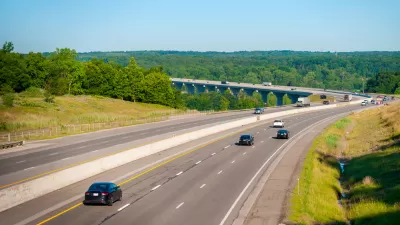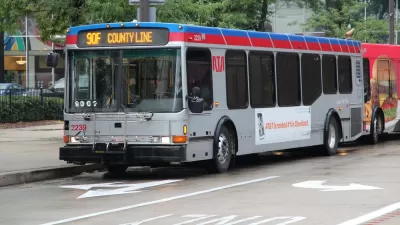With nearly $5 million dedicated to regional planning initiatives, Angie Schmitt questions whether public officials in greater Cleveland are willing to make the hard decisions and compromises necessary to make the area competitive once again.
Winning nearly $5 million from federal and local funding sources to create a plan for regional sustainability was the easiest part of establishing a coordinated plan to address the rapid abandonment of Cleveland's urban areas for unplanned, exurban development, observes Schmitt.
"Of course, winning a grant and mustering the political will to do some actual transformative planning are two different things. Right now there is a fierce internal struggle going on within Northeast Ohio's Sustainable Communities Consortium (NEOSCC), and the outcome could determine whether the region puts the $5 million grant to good use or wastes a rare opportunity."
More than a year after NEOSCC began the planning process, little progress has been made and an internal reorganization has exposed conflicts over the desired magnitude and focus of the plan, writes Schmitt.
"NEOSCC is made up of a broad cross-section of regional interests - rural, suburban and urban officials; representatives from communities of color; highway proponents; bike advocates; environmentalists; business leaders. Younger, more progressive factions want to discuss planning tools that seem daring in Cleveland, like urban growth boundaries, while others - namely those with a long history of government service in Northeast Ohio - say it's not even worth discussing."
"Regions around the country are adopting a new 'technology' - land use planning - to make their cities cleaner, more efficient, healthier and more equitable. Will greater Cleveland reject this new technology – like the Aborigines of Northeast Australia rejected bows and arrows - and further resign itself to becoming a once-great but fallen empire?"
FULL STORY: Will Greater Cleveland Squander Its Chance to Be Competitive Again?

Alabama: Trump Terminates Settlements for Black Communities Harmed By Raw Sewage
Trump deemed the landmark civil rights agreement “illegal DEI and environmental justice policy.”

Planetizen Federal Action Tracker
A weekly monitor of how Trump’s orders and actions are impacting planners and planning in America.

The 120 Year Old Tiny Home Villages That Sheltered San Francisco’s Earthquake Refugees
More than a century ago, San Francisco mobilized to house thousands of residents displaced by the 1906 earthquake. Could their strategy offer a model for the present?

Indy Neighborhood Group Builds Temporary Multi-Use Path
Community members, aided in part by funding from the city, repurposed a vehicle lane to create a protected bike and pedestrian path for the summer season.

Congestion Pricing Drops Holland Tunnel Delays by 65 Percent
New York City’s contentious tolling program has yielded improved traffic and roughly $100 million in revenue for the MTA.

In Both Crashes and Crime, Public Transportation is Far Safer than Driving
Contrary to popular assumptions, public transportation has far lower crash and crime rates than automobile travel. For safer communities, improve and encourage transit travel.
Urban Design for Planners 1: Software Tools
This six-course series explores essential urban design concepts using open source software and equips planners with the tools they need to participate fully in the urban design process.
Planning for Universal Design
Learn the tools for implementing Universal Design in planning regulations.
Clanton & Associates, Inc.
Jessamine County Fiscal Court
Institute for Housing and Urban Development Studies (IHS)
City of Grandview
Harvard GSD Executive Education
Toledo-Lucas County Plan Commissions
Salt Lake City
NYU Wagner Graduate School of Public Service




























